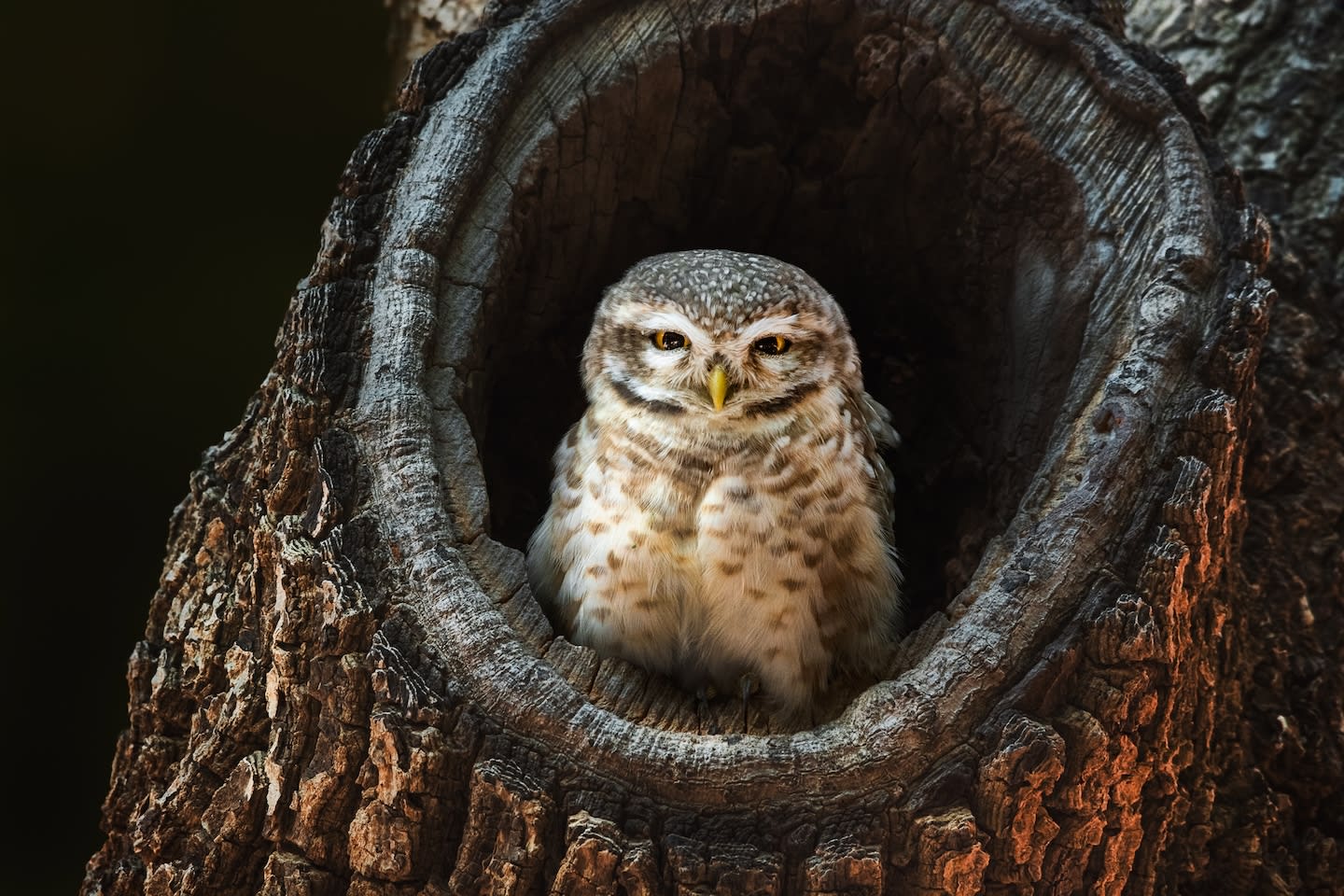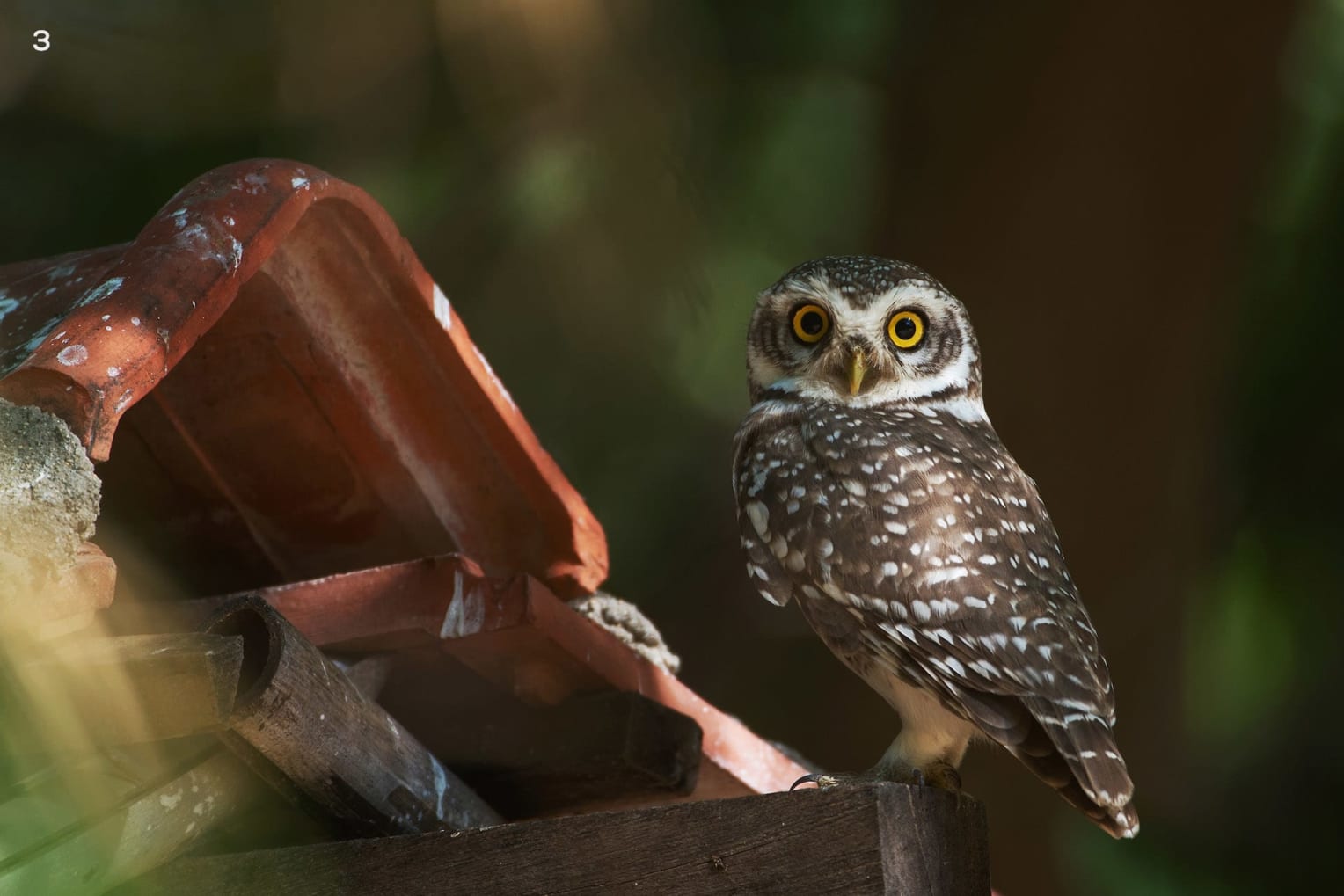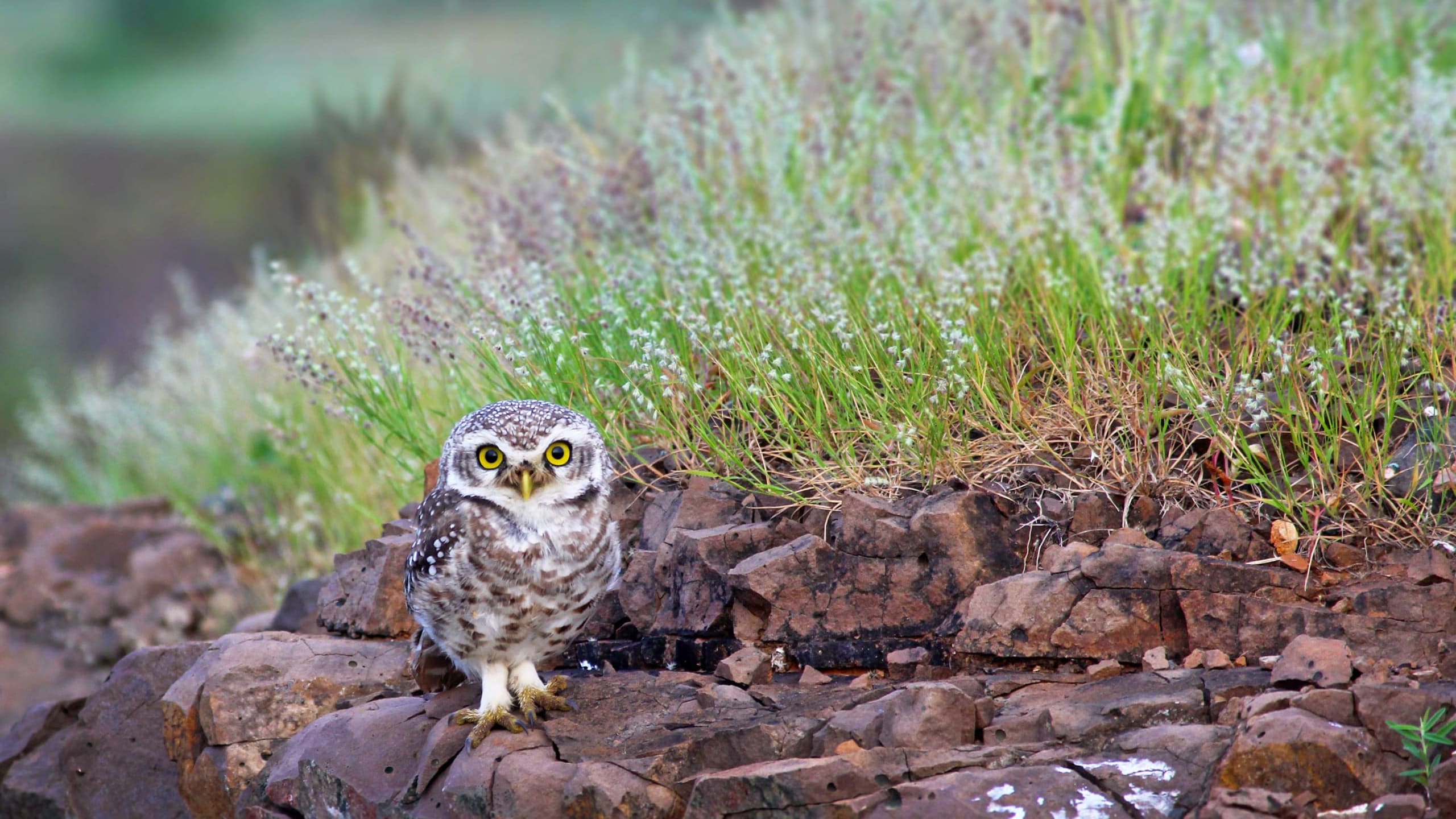 Listen to this article
•
15:34 min
Listen to this article
•
15:34 min
I must have been about twelve when I first saw the fluffy little feathered ragamuffin while living in the quarters of the Assam Secretariat in Guwahati, a green neighbourhood full of fruit-laden trees. The architecture was traditional, meaning the roofs were inverted Vs, with lots of nooks and crevices for little birds to snuggle in. Before this, I had never seen an owl up close.
That day, I was fooling around with a basketball when I caught some movement in a mango tree nearby. A tiny brownish owl with pretty little spots was bobbing up and down vigorously, seemingly trying to keep up with my activity. Though taken aback, I could barely control my laughter as I’d never witnessed such bird behaviour before. At the time, I didn’t know why their heads bobbed; I was happy believing they were trying to interact with me. I head-bobbed back with equal enthusiasm and received an even more vigorous bobbing reply — it looked like the owlet would bounce off the tree. Looking back, I realise it must have been like a scene from a cartoon series — a little girl and a little owl facing each other and rhythmically bobbing up and down!
Using my small Sony Coolpix camera, I clicked my first-ever owl photograph. After that day, my little friend perched on that exact branch every day, and we head-bobbed together. Around the evening, I would hear his friends calling out to one another.
Then, one day, all the trees were cut down, and our houses were replaced by tall, snazzy skyscrapers as new urban development took over the once quaint, green neighbourhood and our old homes were destroyed. I don’t know what happened to my little owl friend after that, but I think of him every time I see a spotted owlet.

Cover Photo: The spotted owlet is known for its adaptability, thriving in forests, farmlands, and urbanscapes. It plays a crucial role in controlling insect and rodent populations. Photo: Neeil Sureja
The spotted owlet (Athene brama) is a small bird (about 19-21 cm) with a pale-yellow beak, bright yellow eyes (that never seem to blink), and thick, white, slightly-furrowed Eugene-Levy-like eyebrows that give the impression they are in deep thought. Its body is brownish, streaked with white flecks, and hides a fluffy cream-coloured tummy streaked with brown.
Like most owls, the spotted owlet is crepuscular (active at twilight) and nocturnal and will cosily sleep during the day inside tree crevices or atop branches with their siblings or mates. Their preferred diet is a mix of juicy insects like beetles and moths, sometimes earthworms and lizards, and occasionally, they enjoy a meal of mice and small birds. They are perch hunters, usually waiting patiently to pounce on prey. In cities, they’ve been observed hunting around streetlamps as the lights attract large numbers of moths — a grand buffet for the owls.
Renowned ornithologist Salim Ali accurately described a spotted owlet’s behaviour: “They fly out fussily when suspicious of being observed and bob and stare at the intruder from a distance in clownish fashion. A large variety of harsh chattering, squabbling and chuckling notes, two individuals frequently combining in a discordant duet. Both sexes share all domestic duties.”
Many readers may have heard a spotted owlet call in the evenings or at night since they are talkative and live in proximity to humans in cities. If we perk up our ears, we may catch the distinct, slightly harsh calls of “chirurrr-chirurrr- chirurrr” followed by or alternating with “cheevak, cheevak, cheevak” or a lot of chuckling!
Why does the spotted owlet bob so much?
Owls’ eyes are fixed in their sockets, but they have extra flexible necks with twice as many neck vertebrae as humans, which compensates for their ocular immobility and allows them to rotate their heads 270 degrees. If you came face to face with a spotted owlet, it would start bobbing its head frantically to calculate your position and estimate your distance from it. This is also a strategy it uses to hunt its prey.
Spotted owlets have captured the human imagination across India because they roost in our backyards and have expressive body language and lively personas. There are varied perceptions and lores tied to this owl, which speaks volumes about the ethno-ornithological relations between humans and birds in our culture. In the anthology Ethno-ornithology: Birds, Indigenous Peoples, Culture and Society (2010), Eugene S. Hunn describes this best when he writes, “Birds are not just feathered self-replicating machines, but sentient beings that may speak to us (if we are ready to listen) and that demand our respect”.
I have found that learning about citizens’ interactions with spotted owlets in their backyards, urban gardens, terrace balconies, and university campuses is delightful, especially in our rapidly urbanising country.
One day, Senbaga Poonguzhali, a nature-lover from Coimbatore, wrote to me about her heartwarming interactions with these small owls in her backyard. She recalls how she used to hear them calling but had never seen them until she accidentally gazed into a pair of big, yellow eyes from a tree close to her balcony. “Every morning, they would snuggle close to one another and snooze happily. At night, they became active. I could hear them calling loudly until daybreak. From my balcony, I started talking to them about random things, and they appeared to listen to my rants. I called them my bondas (vadas) as they were tiny, round, and fluffy.”
Over time, Senbaga’s bond with this pair of spotted owlets grew as she observed them raising a family right next to her balcony. The beauty of this relationship was that neither interfered in the other’s life, and they coexisted beautifully. Senbaga was overjoyed and grateful that the owlets seemed to trust her distant presence in their lives enough to show her their chicks. Sometimes, they perched on branches and seemed to be communicating. Checking in on this family became her daily routine, bringing her much joy. Then, during the second COVID-19 lockdown, when she temporarily moved in with her parents, she recalls missing the owls and feeling anxious about their well-being.
She said, “The first thing I did when I returned home was to rush to my balcony to check on the owls. For two days, I did not spot them. On the third day, the pair came calling, and I dropped what I was doing to rush to the balcony. My bondas were back on their favourite perch, heads bobbing up and down, looking at me with their big yellow eyes. I think the young ones had flown away by then, as I could only see the parents. I told them how happy I was to see them after so long. I think they missed me and my talking as well!” It’s been over four years of this friendship and Senbaga has seen them mating, swooping down to chase cats and snakes, and raising families year after year. She feels blessed.
Spotted owlets have a sentient expression that makes them look both wise and comical. Rayhan, a bird lover from Guwahati, couldn’t stop laughing one day when it had just started to rain. “Three spotted owlets are always around my house, generally perched on the electric poles, and I can see them from my 7th-floor window. They are very active in the evening, flying around and cackling amongst themselves. I always imagine them trying to have funny conversations because of their expressive little faces. One hot afternoon, it started raining, and I heard them call. From my window, I saw them having the time of their lives, getting wet and posing in utterly comical ways! It was one of the best moments I witnessed in my life.”
In some parts of northern India, these owls (khuscoot in Urdu, chugal in Punjabi) are considered good omens. This is because people know they sometimes fly into their houses to take mice and insects. In contrast, if a spotted owlet (pulli nattu in Malayalam) is heard in Kerala, it is believed that a child will soon fall ill. In rural Assam, a calling spotted owlet (futuki pesa in Assamese) signals to people that a young girl is about to reach puberty, a cause for celebration in Assamese culture. Strangely, in urban Assam, it is the opposite; citizens may pelt stones at spotted owlets to shoo them away or spray Gangajal inside the house if they happen to fly inside. They are considered bad omens because of their “dark colour” and “sinister calls”.
Spotted owlets don’t have the safest haven in India’s urban spaces. As green pockets and old traditional houses across the country are demolished, owls have fewer places to nest. From cementing old trees to cutting down dead trees (snags) that provide perfect habitats for spotted owlets, we are snatching away their homes. Proximity to humans in cities makes owls more susceptible to threats. After barn owls, spotted owlets are the most rescued owls in cities. Threats to them range from habitat loss and nest displacement to electrocution, glue traps, and entrapment in pipes and other closed spaces.

Most owls are apex predators critical to ecosystem structure, function, and balance. Spotted owlets have been moved up to Schedule II in India’s Wild Life (Protection) Amendment Bill 2022, which means they now have more legal protection.
General public awareness and bridging the visible knowledge gaps are essential to the fate of owls in cities. They are both worshipped and demonised, owing to a plethora of diverse cultural and religious beliefs attached to them. We are still getting used to sharing spaces with wildlife because of our anthropocentric attitude towards nature, wherein we believe humans to be superior to other species. Resisting the urge to handle an injured owl, stopping kids from pelting owls with stones, busting myths and superstitions around owls, sensitising our neighbours and family about them, and reporting mishandling or trafficking of owls — these acts can go a long way towards expanding room for coexistence with these nocturnal raptors.
Do you wish to make a spotted owlet friend? I’ll let you in on a trick. Go to urban pockets with old architecture, like churches, colleges, and university campuses and get ready for some serious head-bobbing if you spot one!











